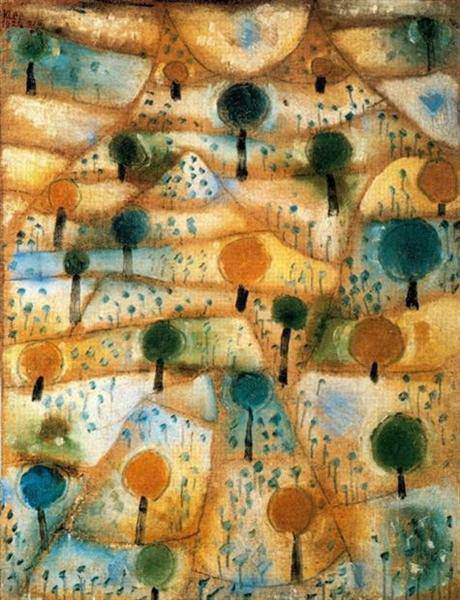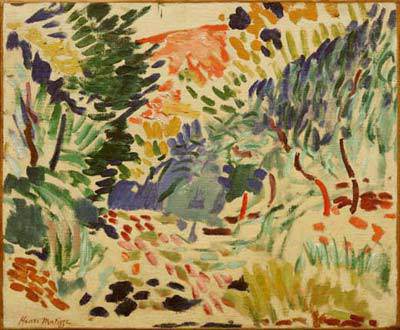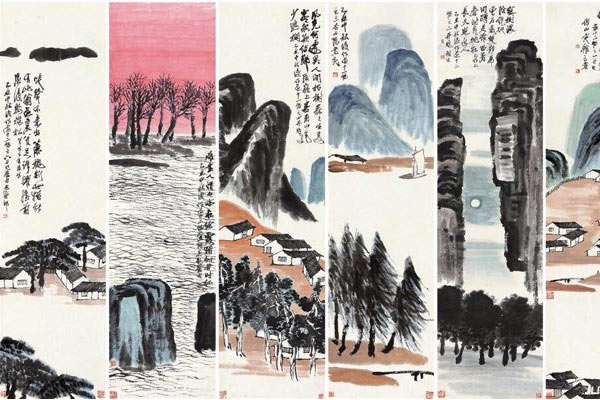Paul Klee · Small Rhythmic Landscape

Paul Klee (Austria, 1879-1940), ca.1920. Oil on canvas mounted on cardboard, 27.8 x 21.5 cm (11 x 8.5 in). Private collection
Few artists are as difficult to classify as Paul Klee, a leading figure in a period of important artistic revolutions and innovations. Sometimes labeled as an expressionist, sometimes as a surrealist, cubist or even futurist, he is actually an artist who painted in his own language, having been influenced both by music and orientalism. His art had an extraordinary influence on the work of other famous artists of the early 20th century.
In 1914, Klee traveled to Tunisia, and he was deeply impressed by the colors of the region. “Color possesses me, it will possess me always”, he wrote in his diary, adding that “the bushes make a nice patchwork rhythm”. This concept of painting as rhythm, also derived from his love of music, is key to understanding the work of Paul Klee.
This little painting is a clear example of Klee’s mature style. “Small rhythmic landscape” does not represent any specific place, but it is a scenario where the artist distributes the elements of nature (light, color, space …), creating a small painted symphony. Trees, like notes from a staff, give rhythm to the composition.
By 1920, when this work was created, Walter Gropius invited Klee to share his expertise at the Bauhaus, where he was a brilliant teacher of color theory and color mixing.
G. Fernández – theartwolf.com

Paul Klee: “Landscape with yellow birds” (1923)
Follow us on:


